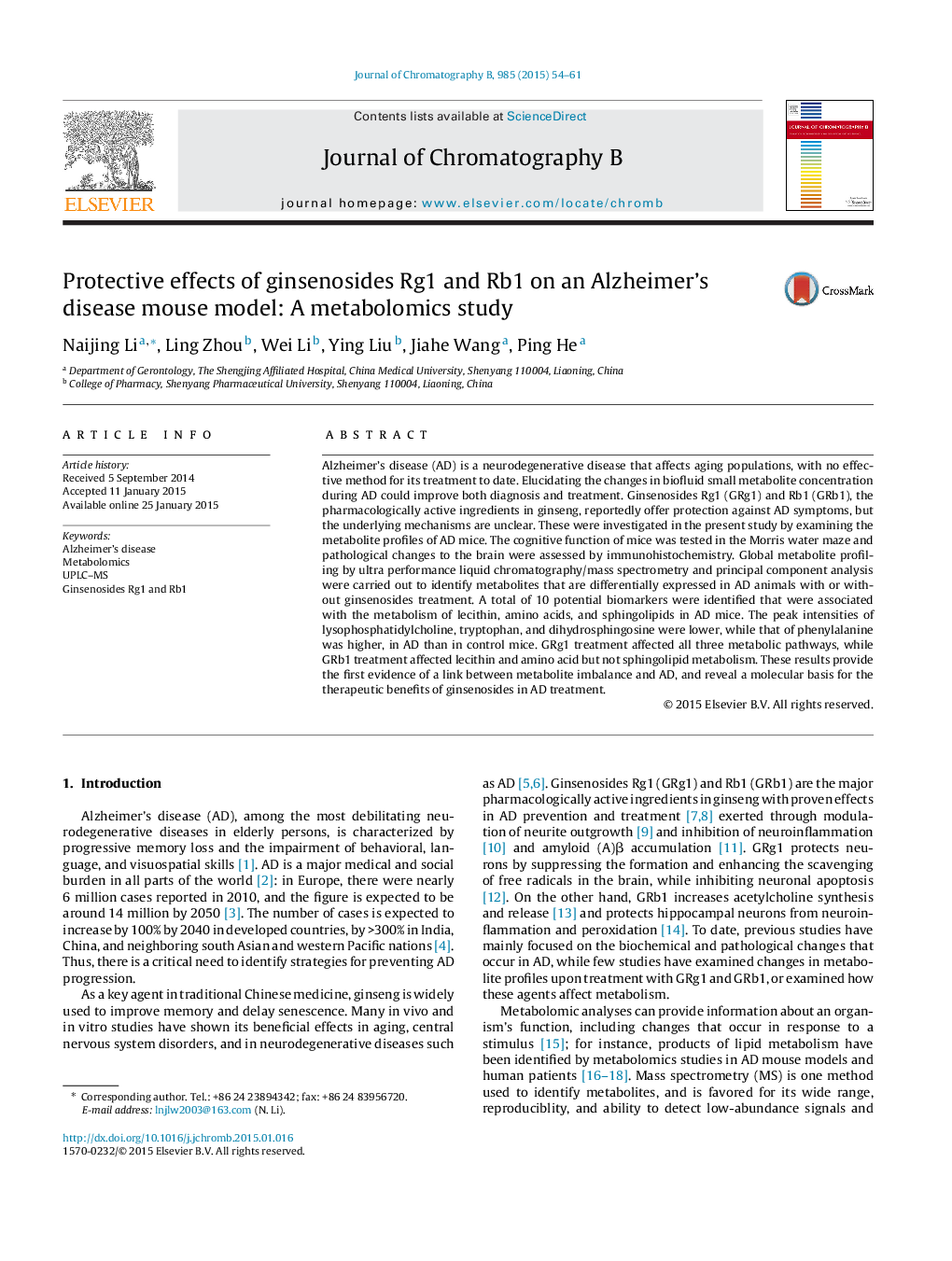| کد مقاله | کد نشریه | سال انتشار | مقاله انگلیسی | نسخه تمام متن |
|---|---|---|---|---|
| 1212189 | 1494062 | 2015 | 8 صفحه PDF | دانلود رایگان |

• Therapeutic effects of ginsenosides Rg1 and Rb1 on AD were examined by a UPLC/MS based metabonomics method.
• Plasma metabolite levels were measured in AD mice treated with GRg1 and GRb1.
• 10 biomarkers linked to lecithin, amino acid, and phospholipid metabolism were found and identified.
• Ginsenosides Rg1 and Rb1 exert protective effects against AD through regulating particular metabolic pathways.
Alzheimer's disease (AD) is a neurodegenerative disease that affects aging populations, with no effective method for its treatment to date. Elucidating the changes in biofluid small metabolite concentration during AD could improve both diagnosis and treatment. Ginsenosides Rg1 (GRg1) and Rb1 (GRb1), the pharmacologically active ingredients in ginseng, reportedly offer protection against AD symptoms, but the underlying mechanisms are unclear. These were investigated in the present study by examining the metabolite profiles of AD mice. The cognitive function of mice was tested in the Morris water maze and pathological changes to the brain were assessed by immunohistochemistry. Global metabolite profiling by ultra performance liquid chromatography/mass spectrometry and principal component analysis were carried out to identify metabolites that are differentially expressed in AD animals with or without ginsenosides treatment. A total of 10 potential biomarkers were identified that were associated with the metabolism of lecithin, amino acids, and sphingolipids in AD mice. The peak intensities of lysophosphatidylcholine, tryptophan, and dihydrosphingosine were lower, while that of phenylalanine was higher, in AD than in control mice. GRg1 treatment affected all three metabolic pathways, while GRb1 treatment affected lecithin and amino acid but not sphingolipid metabolism. These results provide the first evidence of a link between metabolite imbalance and AD, and reveal a molecular basis for the therapeutic benefits of ginsenosides in AD treatment.
Journal: Journal of Chromatography B - Volume 985, 15 March 2015, Pages 54–61